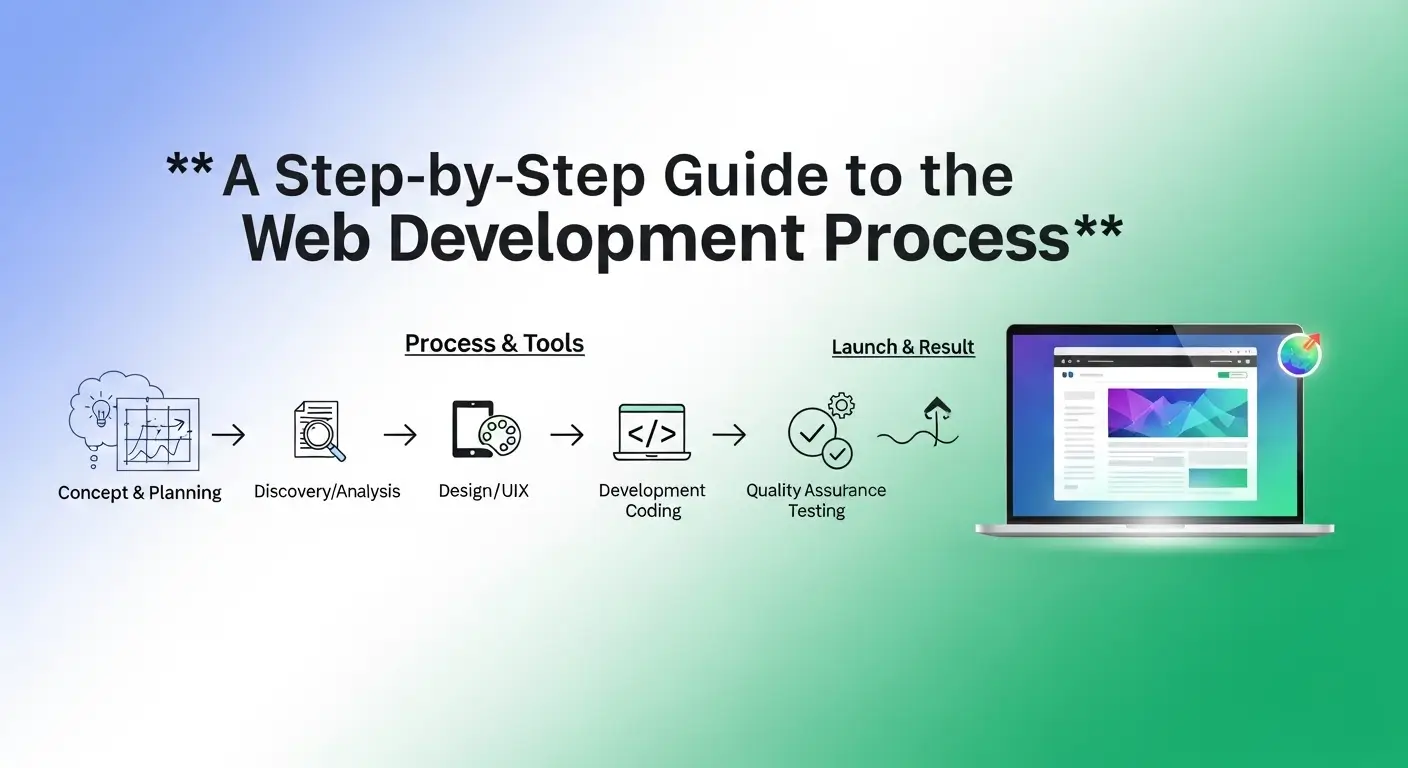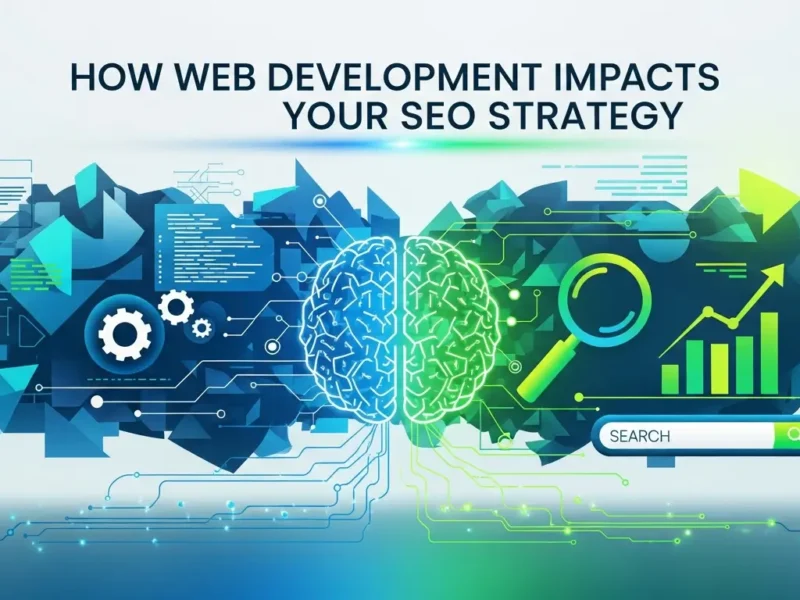In today’s digital-first world, a robust, user-friendly, and secure online presence—comprising all the fundamental Website Essentials—is no longer a luxury—it’s an absolute necessity. Whether you’re a burgeoning startup, a seasoned entrepreneur, or an established enterprise, understanding the web development process is paramount to translating your vision into a functional, impactful digital reality. Yet, for many, the journey from an initial idea to a live, thriving website can seem daunting, shrouded in technical jargon and complex methodologies.
As an experienced SEO copywriter and an industry expert who has navigated countless web development projects, I’m here to demystify this intricate journey. This comprehensive guide will break down the entire web development lifecycle into manageable, actionable steps, equipping you with the knowledge to confidently plan, execute, and maintain a successful online platform. Forget generic advice; we’re diving deep into the strategic insights and tactical necessities that truly define successful web development.
The Six Pivotal Phases of Web Development: A Strategic Blueprint
The web development process is an iterative cycle, not a rigid linear path. However, for clarity and strategic planning, it’s best understood through distinct, sequential phases. Each phase builds upon the last, ensuring a cohesive and efficient progression towards your ultimate goal.
Phase 1: Discovery & Planning – The Foundation of Success
This initial phase is arguably the most critical, laying the strategic groundwork for your entire project. Skipping or rushing through discovery can lead to scope creep, budget overruns, and ultimately, a product that fails to meet its objectives.
Key Actions:
- Requirements Gathering & Goal Definition:
- What problem does your website solve? Define the primary objective (e.g., e-commerce sales, lead generation, information dissemination, community building).
- Target Audience Analysis: Who are your users? What are their needs, behaviors, and pain points? This informs everything from design to functionality.
- Competitor Analysis: What are your rivals doing well? Where are their gaps? How can you differentiate?
- Feature Prioritization: List all desired functionalities and prioritize them (must-haves vs. nice-to-haves) to define your Minimum Viable Product (MVP).
- Scope Definition & Project Planning:
- Detailed Scope Document: Articulate project goals, target audience, technical requirements, desired features, content strategy, and potential integrations.
- Technology Stack Selection: Decide on programming languages (e.g., Python, JavaScript, PHP), frameworks (e.g., React, Angular, Laravel, Django), databases (e.g., MySQL, PostgreSQL, MongoDB), and CMS (e.g., WordPress, Shopify, custom). This choice is dictated by project requirements, scalability needs, and budget.
- Project Timeline & Resource Allocation: Establish realistic deadlines, define team roles (designers, front-end developers, back-end developers, QA specialists, project managers), and allocate resources.
- Budget Estimation: Develop a clear financial plan, accounting for development, hosting, third-party services, and ongoing maintenance.
- Wireframing & Prototyping (Conceptual Design):
- Wireframes: Low-fidelity visual representations of your website’s layout, focusing on functionality, content hierarchy, and user flow, without design elements. They answer: “Where will everything go?”
- Prototypes: Interactive (though often non-functional) models that simulate the user experience, allowing for early feedback and iteration on user journeys. This ensures usability before a single line of code is written.
Expert Insight: Invest heavily in this phase. A well-defined scope and meticulous planning are your best defense against project derailment. Think of it as building the architectural blueprint for a house; you wouldn’t start pouring concrete without one.
Phase 2: Design – Crafting the User Experience (UX) and User Interface (UI)
With a solid plan in hand, this phase brings your website’s visual identity and user interaction to life. It’s about blending aesthetics with intuitive functionality.
Key Actions:
- User Experience (UX) Design:
- Based on wireframes, UX designers focus on making the website intuitive and pleasurable to use. This involves mapping user journeys, optimizing navigation, and ensuring accessibility.
- Information Architecture: Organizing content in a logical, easy-to-find structure.
- User Interface (UI) Design:
- UI designers translate the UX framework into appealing visuals. This includes creating mockups (high-fidelity visual designs), choosing color palettes, typography, iconography, and imagery.
- Style Guides: Documenting all visual elements to ensure consistency across the entire website and for future expansions.
- Responsive Design: Designing for optimal viewing and interaction across various devices (desktops, tablets, smartphones) is no longer optional; it’s fundamental.
Expert Insight: Great design isn’t just about beauty; it’s about solving user problems elegantly. A website can be technically brilliant, but if users can’t navigate it or find it visually unappealing, it will fail.
Phase 3: Development – Bringing the Vision to Code
This is where the magic happens – converting designs and functionalities into working code. This phase is typically divided into front-end and back-end development.
Key Actions:
- Front-End Development:
- Client-Side Coding: Building everything users directly interact with. This involves translating UI designs into HTML (structure), CSS (styling), and JavaScript (interactivity).
- Frameworks & Libraries: Utilizing tools like React, Angular, or Vue.js for robust, scalable, and dynamic user interfaces.
- Ensuring Responsiveness: Implementing code that adapts the layout and content to different screen sizes.
- Back-End Development:
- Server-Side Logic: Building the engine behind the scenes. This includes server-side scripting (e.g., Python, Node.js, PHP, Ruby), database management, and application logic.
- Database Creation & Integration: Designing and implementing the database structure to store and retrieve all necessary information.
- API Development: Creating Application Programming Interfaces (APIs) for seamless communication between the front-end, back-end, and any third-party services.
- Content Integration:
- Populating the website with actual text, images, videos, and other media, often managed through a CMS.
Expert Insight: Modern development often leverages version control systems like Git. This allows multiple developers to work simultaneously, track changes, and revert to previous versions, ensuring collaboration and preventing catastrophic errors. Embrace clean code, modularity, and future scalability from the outset.
Phase 4: Testing & Quality Assurance (QA) – Ensuring Flawless Performance
Before your website goes live, rigorous testing is non-negotiable. This phase identifies and rectifies bugs, ensuring the website functions flawlessly and delivers an optimal user experience.
Key Actions:
- Functional Testing: Verifying that all features work as intended (forms submit correctly, links navigate, buttons trigger actions).
- Performance Testing: Checking website speed, responsiveness under load, and scalability. This includes load testing and stress testing.
- Security Testing: Identifying vulnerabilities to protect against cyber threats. This involves penetration testing and vulnerability assessments.
- Usability Testing: Observing real users interacting with the website to identify areas of confusion or difficulty.
- Cross-Browser & Cross-Device Compatibility: Ensuring the website looks and functions correctly across different web browsers (Chrome, Firefox, Safari, Edge) and devices.
- Content Review: Proofreading all text for grammar, spelling, factual accuracy, and SEO optimization.
Expert Insight: Adopt an iterative testing approach throughout development, rather than leaving it all until the end. Early bug detection saves significant time and cost. Automated testing tools can accelerate this process for repetitive checks.
Phase 5: Deployment & Launch – Go Live!
This is the exciting moment your website goes public. While seemingly straightforward, a successful launch requires careful preparation.
Key Actions:
- Server Setup & Configuration: Preparing the hosting environment (shared, VPS, dedicated, cloud) and configuring domain names, SSL certificates (essential for security and SEO), and CDN (Content Delivery Network) for faster global access.
- Database Migration: Moving the final, tested database to the live server.
- Final Checks: A comprehensive checklist of pre-launch tasks, including SEO meta tags, broken link checks, sitemap submission to search engines, analytics integration, and backup configurations.
- Launch: Making the website publicly accessible. This often involves a carefully coordinated release schedule.
Expert Insight: A staged deployment, starting with a small audience or specific region, can help catch unforeseen issues before a full public rollout. Always have a rollback plan in case of critical issues post-launch.
Phase 6: Post-Launch Maintenance & Iteration – The Journey Continues
Launching your website is not the end; it’s the beginning of its lifecycle. Websites are living entities that require ongoing care and evolution to remain effective.
Key Actions:
- Performance Monitoring: Continuously tracking website speed, uptime, security threats, and user behavior using analytics tools (e.g., Google Analytics).
- Bug Fixing & Updates: Addressing any newly discovered issues and updating software, plugins, and frameworks to maintain security and functionality.
- Content Updates & SEO: Regularly refreshing content, publishing new articles, and optimizing for search engines to maintain relevance and search rankings.
- Feature Enhancements: Based on user feedback, analytics data, and market trends, developing and integrating new functionalities to improve the user experience and achieve evolving business goals.
- Backups & Security Audits: Regular data backups and periodic security checks are crucial for disaster recovery and protection against evolving cyber threats.
Expert Insight: Embrace a culture of continuous improvement. The digital landscape is dynamic, and your website must evolve with it. Regular analysis of user data provides invaluable insights for future iterations and ensures your website remains a powerful asset.
Conclusion
Navigating the web development process successfully requires a blend of strategic foresight, technical expertise, and diligent execution. By understanding these six pivotal phases – from initial discovery and meticulous planning, through design, development, and rigorous testing, all the way to deployment and ongoing maintenance – you’re no longer just building a website; you’re crafting a dynamic digital platform designed for sustained growth and engagement.
This guide empowers you not just to ask the right questions, but to actively participate and make informed decisions at every stage. Remember, a website is a powerful business tool, and like any tool, its effectiveness depends on how well it’s crafted and maintained.
Ready to transform your vision into a high-performing digital reality?Don’t let complexity deter you. Whether you’re planning your first website or looking to revamp an existing one, consider partnering with a specialized web development company Noida to bring your vision to life. Let’s build something exceptional together!



